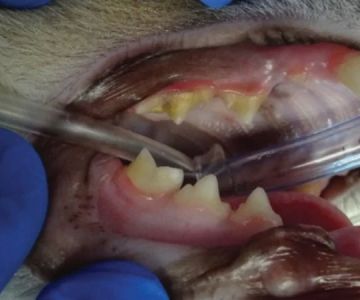How to Prevent Mites in Pet Hamsters: A Complete Guide
- Why Mites Are Dangerous for Hamsters
- Symptoms of Mites in Hamsters
- How to Prevent Mites in Hamsters
- Treatment for Mites in Hamsters
- Maintaining a Healthy Environment for Your Hamster
Why Mites Are Dangerous for Hamsters
Mites are tiny parasites that can infest your pet hamster’s skin and fur. While they are not always immediately noticeable, they can cause serious discomfort and health issues. Mites can lead to skin irritation, excessive scratching, and hair loss, and in severe cases, they can even cause infections if left untreated. It's important to take preventative measures to protect your hamster from these pests.
In addition to physical symptoms, mites can weaken your hamster's immune system, making it more susceptible to other diseases. Furthermore, mites can spread to other pets, so ensuring your hamster is mite-free is important for the health of all animals in your household.
Symptoms of Mites in Hamsters
Recognizing the symptoms of mites in hamsters is crucial for early detection and treatment. Here are some common signs that your hamster may have mites:
1. Excessive Scratching
If your hamster is constantly scratching or rubbing its body against objects, it may be a sign of mite infestation. This behavior is usually a response to the itching caused by the mites.
2. Hair Loss
Mites often cause hair to fall out in patches, leaving your hamster with bald spots. This can be a clear indicator that something is wrong with your hamster's skin.
3. Redness or Sores on the Skin
Inflammation and sores may appear on your hamster's skin, particularly around areas where the mites are feeding. These red, irritated patches can be painful for your pet and should not be ignored.
4. Behavioral Changes
A hamster that is feeling unwell due to mites may become more irritable, lethargic, or less active than usual. If you notice any changes in behavior, it's important to check for signs of mites or other health issues.
How to Prevent Mites in Hamsters
Preventing mites in hamsters requires regular care and maintaining a clean environment. Here are some steps you can take to minimize the risk:
1. Maintain a Clean Cage
One of the best ways to prevent mites is to keep your hamster's cage clean. Regularly remove soiled bedding and change it every few days to prevent mites from settling in. Additionally, clean the cage with a pet-safe disinfectant to kill any potential mites or bacteria.
2. Provide Fresh Bedding
Choose bedding that is safe for hamsters, such as paper-based or wood-based products. Avoid using bedding materials that are too dusty, as this can irritate your hamster’s skin and make it more susceptible to mites.
3. Avoid Contact with Infected Animals
If you have other pets, be cautious about contact with animals that may have mites. If you suspect another pet is carrying mites, take them to the vet for treatment before introducing them to your hamster's environment.
4. Regular Grooming
Brush your hamster's fur regularly to keep it clean and free from potential pests. Regular grooming helps remove any loose fur or debris, which can attract mites.
Treatment for Mites in Hamsters
If your hamster has already been infested by mites, prompt treatment is essential to prevent further damage. Here are common treatments used by veterinarians:
1. Medicated Bath or Lotion
Your vet may recommend a medicated bath or topical lotion designed to kill the mites and soothe your hamster’s skin. These treatments should be applied as directed to ensure effectiveness.
2. Mite-Fighting Prescription
In some cases, a veterinarian might prescribe a medication or injection to treat the mites. These prescription treatments are designed to target and eliminate the mites, helping your hamster recover quickly.
3. Isolation and Care
Keep your hamster isolated from other pets during treatment to avoid spreading the mites. Ensure your hamster has a clean, quiet space to recover, with fresh bedding and food available at all times.
Maintaining a Healthy Environment for Your Hamster
Creating and maintaining a healthy environment for your hamster is key to preventing mites and other health issues. Here are a few additional tips to keep your hamster healthy:
1. Regular Vet Checkups
Routine vet checkups can help catch any health issues early, including mite infestations. Your vet will also provide advice on how to maintain your hamster’s overall health, ensuring it lives a long and happy life.
2. Proper Nutrition
Ensure your hamster is receiving a well-balanced diet with fresh fruits, vegetables, and high-quality hamster pellets. A nutritious diet helps boost your hamster's immune system, making it less susceptible to pests like mites.
3. Stress Reduction
A stressed hamster is more vulnerable to illness and pests. Keep your hamster’s environment calm and quiet, and provide plenty of opportunities for mental stimulation and exercise.










